Thunderbolt and Lightfoot
7 /10 1 Votes
Duration Country United States | 7/10 IMDb Genre Comedy, Crime, Drama Initial DVD release June 13, 2000 Writer Michael Cimino Language English | |||||||||||||||||||||||||||||||||
 | ||||||||||||||||||||||||||||||||||
Release date May 23, 1974 (1974-05-23) Cast (Thunderbold), (Lightfoot), (Eddie Goody), (Melody), (Curly), (Red Leary) Similar movies Salt , Mad Max: Fury Road , Blackhat , Something Wild , John Wick , Taken 3 Tagline Thunderbolt… the man with the reputation. Lightfoot… the kid who's about to make one! | ||||||||||||||||||||||||||||||||||
Thunderbolt and lightfoot trailer 1974
Thunderbolt and Lightfoot is a 1974 American crime film written and directed by Michael Cimino and starring Clint Eastwood, Jeff Bridges, George Kennedy, and Geoffrey Lewis.
Contents
- Thunderbolt and lightfoot trailer 1974
- Thunderbolt and lightfoot ending
- Plot
- Development screenplay
- Shooting
- Release
- Reception
- Analysis
- References

Thunderbolt and lightfoot ending
Plot

As a young ne'er-do-well, Lightfoot (Jeff Bridges) steals a car. In the other sub-story, an assassin attempts to shoot a preacher delivering a sermon at his pulpit. The preacher escapes on foot. Lightfoot, who happens to be driving by, inadvertently rescues the preacher by running over his pursuer and giving the preacher a lift.
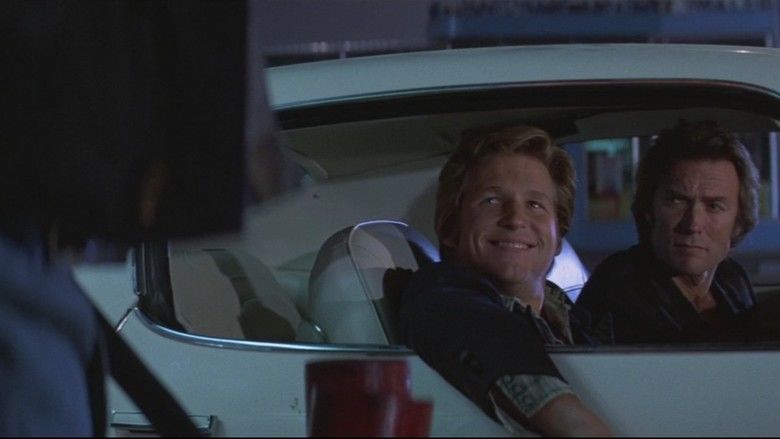
Lightfoot eventually learns that the "minister" is really a notorious bank robber known as "The Thunderbolt" (Clint Eastwood) for his use of a 20 millimeter cannon to break into a safe. Hiding out in the guise of a clergyman following the robbery of a Montana bank, Thunderbolt is the only member of his old gang who knows where the loot is hidden.
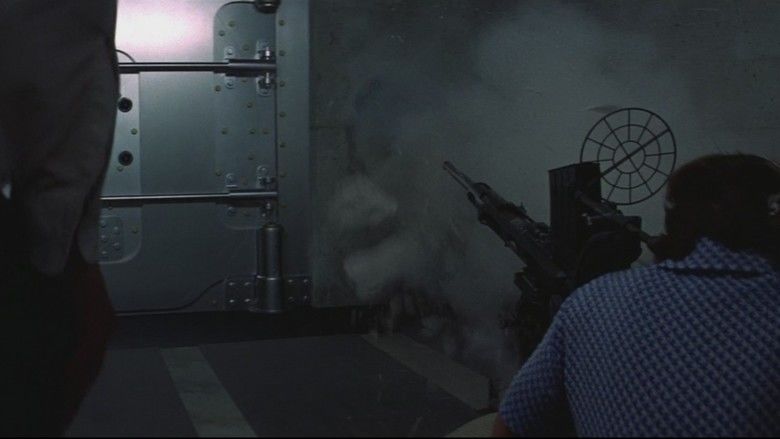
After escaping another attempt on his life by two other men, Thunderbolt tells Lightfoot that the ones trying to kill him are members of his gang who mistakenly thought Thunderbolt had double-crossed them. He and Lightfoot journey to Warsaw, Montana to retrieve the money hidden in an old one-room schoolhouse. They discover the schoolhouse has been replaced by a brand-new school standing in its place.
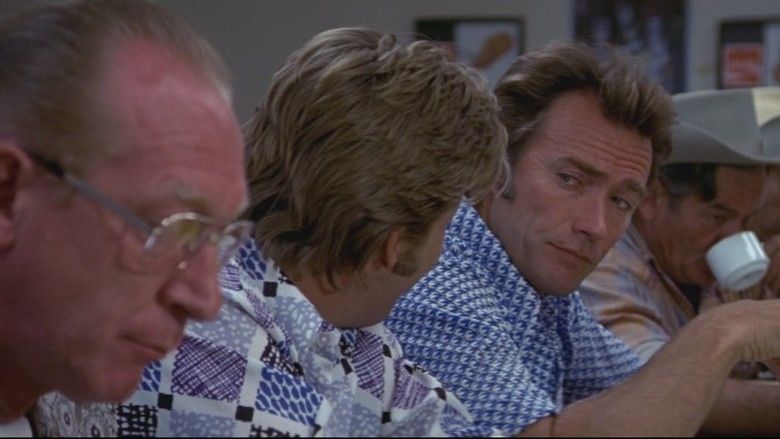
Thunderbolt and Lightfoot are abducted by the men who were pursuing them—the vicious Red Leary (George Kennedy) and the gentle Eddie Goody (Geoffrey Lewis)—and driven to a remote location where Thunderbolt and Red fight each other, after which Thunderbolt explains how he never betrayed the gang.
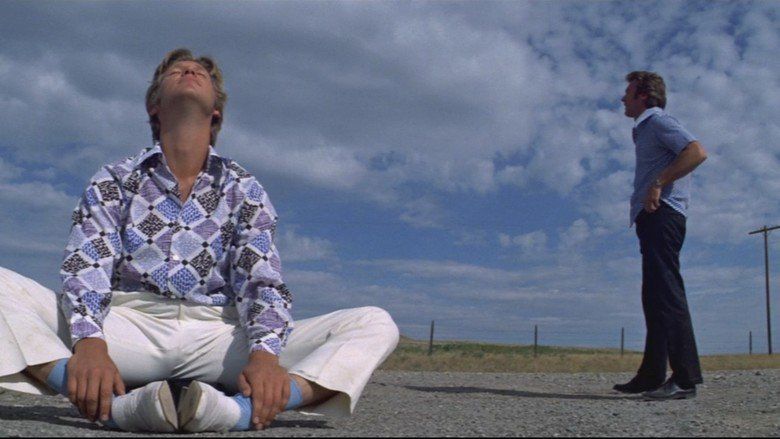
Lightfoot proposes another heist—robbing the same company as before—with a variation on the original plan; the variation being due to Lightfoot inadvertently killing their electronics expert, Dunlap, the man who tried to assassinate Thunderbolt in the earlier scene. In the city where the bank is located, the men find jobs to raise money for needed equipment while they plan the heist.
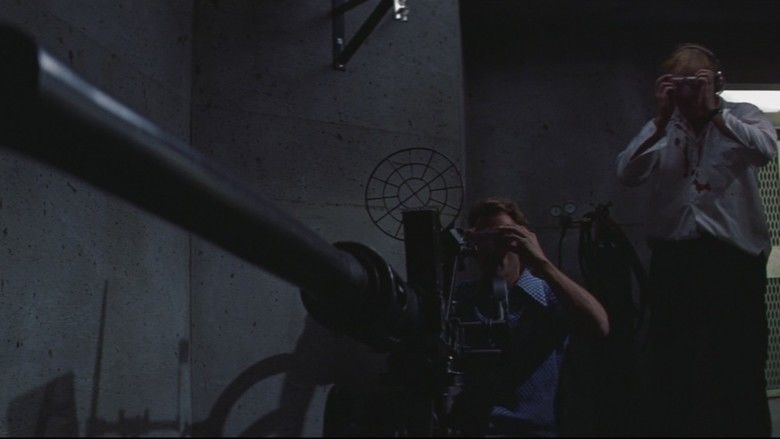
The robbery begins as Thunderbolt and Red gain access to the building. Lightfoot, dressed as a woman, distracts the Western Union office's security guard, deactivates the ensuing alarm, and is picked up by Goody. Using an anti-tank cannon to breach the vault's wall, as they did in the first heist, the gang escapes with the loot. They flee in the car, with Red and Goody in the trunk, to a nearby drive-in movie in progress. Upon seeing a shirt tail protruding from the car's trunk lid (which is a strong indication one or more people are hiding in the trunk to avoid paying), the suspicious theater manager calls the police and a chase ensues. Goody is shot and Red throws him out of the trunk onto a dirt road, where he dies.
Red then forces Thunderbolt and Lightfoot to stop the car. He pistol-whips them both, knocking them unconscious, and kicks Lightfoot violently in the head. Red takes off with the loot in the getaway car but is again pursued by police, who shoot Red several times, causing him to lose control of the car and crash through the window of a department store, where he is attacked and killed by the store's vicious watchdog.
Escaping on foot, Thunderbolt and Lightfoot hitch a ride the next morning and are dropped off near Warsaw, Montana, where they stumble upon the one-room schoolhouse—now a historical monument on the side of a highway—moved there from its original location in Warsaw after the first heist. As the two men retrieve the stolen money, Lightfoot's behavior becomes erratic as a result of the beating.
Thunderbolt buys a new Cadillac convertible with cash, something Lightfoot said he had always wanted to do, and picks up his waiting partner, who is gradually losing control of the left side of his body. As they drive away celebrating their success with cigars, Lightfoot, in obvious distress, tells Thunderbolt in a slurred voice how proud he is of their 'accomplishments', and slumps over dead.
Thunderbolt snaps his cigar in half (as it is no longer a celebration), and with his dead partner beside him, he drives off down the highway into the distance.
Development & screenplay
Stan Kamen of the William Morris Agency came up with the initial idea for Thunderbolt and Lightfoot, but gave it to Michael Cimino to write on speculation with Eastwood in mind. Due to the great financial success of Dennis Hopper's Easy Rider, road pictures were a popular genre in Hollywood. Eastwood himself wanted to do a road movie. Agent Leonard Hirshan brought the script to Eastwood from fellow agent Kamen. Reading it, Eastwood liked it so much that he originally intended to direct it himself. However, on meeting Cimino, he decided to give him the directing job instead, giving Cimino his big break and feature-film directorial debut. Cimino later said that if it was not for Eastwood, he never would have had a career in film. Cimino patterned Thunderbolt after one of his favorite '50s films, Captain Lightfoot. The music is composed by Dee Barton but the song "Where Do I Go From Here?" is composed and performed by Paul Williams.
Shooting
Although Eastwood generally refused to spend much time in scouting for locations, particularly unfamiliar ones, Cimino and Eastwood's producer Robert Daley traveled extensively around the Big Sky Country in Montana for thousands of miles and eventually decided on the Great Falls area and to shoot the film in the towns of Ulm, Hobson, Fort Benton, Augusta and Choteau and surrounding mountainous countryside. The film was shot in 47 days from July to September 1973. It was filmed in Fort Benton, Wolf Creek, Great Falls, and Hobson. St. John's Lutheran Church in Hobson was used for the opening scene.
Eastwood did not like to do any more than three takes on any given shot, according to co-star Bridges. "I would always go to Mike and say 'I think I can do one more. I got an idea.' And Mike would say 'I gotta ask Clint.' Clint would say, 'Give the kid a shot.'" Charles Okun, first assistant director on Thunderbolt, added, "Clint was the only guy that ever said 'no'. Michael said 'OK, let's go for another take.' It was take four, Clint would say 'No we got enough. We got it.' [...] And if [Cimino] took too long to get it ready, [Clint] would say, 'It's good, let's go.'"
Release
Thunderbolt was released on May 23, 1974. The film grossed $9 million in rentals on its initial theatrical release and eventually grossed $25 million overall, making it the 17th highest-grossing film of 1974. The film did respectable box office business, and the studio profited, but Clint Eastwood vowed never to work with the movie's distributor United Artists again due to what he felt was bad promotion. According to author Marc Eliot, Eastwood perceived himself as being upstaged by Bridges.
Given that for Eastwood this was an offbeat film, Frank Wells of Warner Bros. refused to back Malpaso in the production, leaving him to turn to United Artists and producer Bob Daley. Eastwood was unhappy with the way that United Artists had produced the film and swore "he would never work for United Artists again", and the scheduled two-film deal between Malpaso and UA was cancelled.
Thunderbolt and Lightfoot was released to DVD by MGM Home Video on June 13, 2000 as a Region 1 widescreen DVD and also by Twilight Time on February 11, 2014 as a Region 1 widescreen Blu-ray DVD.
Reception
Jay Cocks of Time called the film "one of the most ebullient and eccentric diversions around." Leonard Maltin gave the film three out of four stars, describing it as "Colorful, tough melodrama-comedy with good characterizations; Lewis is particularly fine, but Bridges steals the picture."
Thunderbolt has an 87% "Fresh" rating on Rotten Tomatoes. The RT consensus is "This likable buddy/road picture deftly mixes action and comedy, and features excellent work from stars Clint Eastwood and Jeff Bridges and first-time director Michael Cimino." Thunderbolt has since become a cult film.
As a result of this film and Cimino's TV commercial work, producer Michael Deeley would approach Cimino to direct and co-write the Oscar-winning The Deer Hunter (1978).
Jeff Bridges received the film's only nomination for an Academy Award for Best Supporting Actor. Eastwood's acting performance was noted by critics to the extent that Clint himself believed it was Oscar worthy.
Analysis
Author Michael Bliss wrote that while Thunderbolt may appear to be a conventional violent action film with Eastwood in the lead role, the film is more like "a meditation on, than a representation of, the male camaraderie theme" using rhetorical devices such as symbol, camerawork, and allusive dialogue to add to that theme. According to Bliss, the film's structural paradigm describes a tripartite series of events: natural order followed by disturbance followed by a restoration of natural order.
References
Thunderbolt and Lightfoot WikipediaThunderbolt and Lightfoot IMDb Thunderbolt and Lightfoot themoviedb.org
